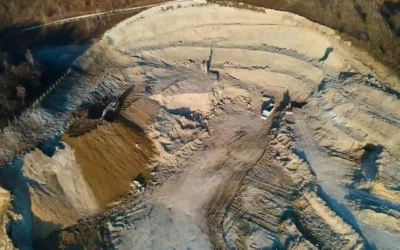Silica sand is a versatile material with numerous applications in a variety of industries, such as construction, glass manufacturing and foundry. One of the lesser known but important uses of silica sand is in the agricultural industry, where it plays an essential role in improving crop growth and promoting soil health. In this article, we will discuss the importance of silica sand in agriculture, its unique properties and how it contributes to sustainable and productive agricultural practices.
Silica sand in agriculture
Soil amendment
One of the main applications of silica sand in agriculture is as a soil amendment. By adding silica sand to the soil, farmers can improve the physical properties of the soil, such as drainage, aeration and water retention. This, in turn, promotes root growth, nutrient uptake and overall plant health, leading to better yields and crop quality.
Hydroponic growing medium
Silica sand is also used as a growing medium in hydroponic systems, where plants are grown without soil and rely on nutrient-rich water solutions for nourishment. The use of silica sand in hydroponic systems provides excellent aeration and drainage, which helps maintain healthy root development and efficient nutrient uptake.
Pest control
Silica sand can also be used as a natural pest control solution in agriculture. When applied to the soil surface or mixed into the growing medium, the fine, abrasive particles of silica sand can deter pests such as slugs and snails, preventing them from damaging crops.
Unique properties of silica sand
Particle size and shape
The particle size and shape of silica sand make it an ideal material for use in agriculture. Its fine, angular particles improve soil structure, promote drainage and create optimal conditions for root growth and nutrient absorption.
Inertia
Silica sand is chemically inert, which means that it does not react with other substances in the soil or growing medium. This property ensures that the addition of silica sand will not adversely affect soil chemistry or plant nutrient availability.
Natural composition
Silica sand is a natural, non-toxic material derived from the earth’s crust. Its use in agriculture contributes to sustainable agricultural practices, as it does not introduce harmful chemicals or synthetic materials into the environment.
Silica sand applications in agriculture
Field crop production
Silica sand can be applied to field crop production, such as corn, wheat and soybeans, to improve soil structure, promote healthy root development and enhance nutrient uptake.
Horticulture
In horticultural applications, silica sand can be used as a soil amendment for container-grown plants, improving drainage and aeration and promoting healthy root growth.
Greenhouse production
Silica sand is used in greenhouse production, where it serves as a growing medium in hydroponic systems or as a component in soilless substrate mixes, helping to support optimal plant growth and nutrient uptake. Silica sand is a valuable material in the agricultural industry, where it contributes to improved crop growth, soil health and sustainable farming practices. Its unique properties, such as particle size and shape, inertness and natural composition, make it an ideal solution for a variety of agricultural applications, from field crop production to horticulture and greenhouse operations. As the demand for sustainable and efficient farming practices continues to grow, the use of silica sand in agriculture will continue to be an important tool for farmers seeking to optimize crop yields, improve soil health and protect the environment.






